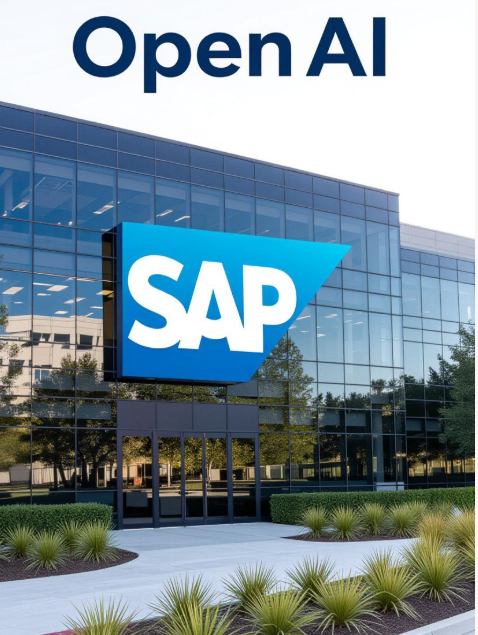Remember when OpenAI was actually “open”? Those days seemed long gone as the company shifted toward closed, commercial models. But in a surprising twist that nobody saw coming, OpenAI just dropped two brand-new open-weight models that are shaking up the entire AI landscape. Meet GPT-OSS the company’s unexpected return to its open source roots.
What Exactly Is GPT-OSS?
OpenAI just released gpt-oss-120b and gpt-oss-20b—two state-of-the-art open-weight language models that deliver strong real-world performance at low cost, available under the flexible Apache 2.0 license. Think of these as OpenAI’s gift to the developer community – powerful AI models that you can actually download, modify, and use however you want.
The naming convention is pretty straightforward. GPT-OSS comprises two models: a big one with 117B parameters (gpt-oss-120b), and a smaller one with 21B parameters (gpt-oss-20b). Despite the “120b” in the name, the larger model actually has 117 billion parameters, while the smaller one packs 21 billion – both designed to punch well above their weight class.
Why This Announcement Caught Everyone Off Guard
OpenAI is getting back to its roots as an open source AI company with today’s announcement, which is honestly the last thing most people expected. For years, OpenAI has been criticized for moving away from its original open mission. The company that once promised to democratize AI had become synonymous with closed, expensive models accessible only through APIs.
This shift back to open source isn’t just about nostalgia – it’s a strategic play in an increasingly competitive market. Companies like Meta with their Llama series, Mistral AI, and Chinese startup DeepSeek have been gaining serious ground with their open-weight models. OpenAI released two open-weight language models designed to serve as lower-cost, accessible options that are easy for developers, researchers to use.
The Technical Powerhouse Behind GPT-OSS
What makes these models special isn’t just their open nature – it’s their impressive capabilities. The gpt-oss models trained on NVIDIA H100 GPUs using the PyTorch framework with expert-optimized Triton kernels. The training process was massive: the training run for gpt-oss-120b required 2.1 million H100-hours to complete, with gpt-oss-20b needing almost 10x fewer.
To put that in perspective, 2.1 million H100-hours represents an enormous computational investment. These aren’t just thrown-together models – they’re the result of serious engineering and massive resources. The fact that OpenAI is giving these away for free is remarkable.
The model has a knowledge cutoff of June 2024, making it quite current for most applications. This means these models have been trained on relatively recent data, giving them better understanding of current events and recent developments compared to older open-source alternatives.
What Makes GPT-OSS Different from the Competition
The key differentiator here isn’t just that these models are open – it’s that they’re specifically designed for reasoning and agentic tasks. GPT OSS is designed for powerful reasoning, agentic tasks, and versatile developer use cases. This means they’re not just good at generating text; they can actually think through problems, plan solutions, and work as autonomous agents.
Traditional language models are great at pattern matching and generating coherent text, but reasoning models take things to the next level. They can break down complex problems, consider multiple approaches, and arrive at logical conclusions. This makes them incredibly valuable for applications like coding assistants, research tools, and automated problem-solving systems.
The Apache 2.0 License: What It Really Means for You
The models are available under the Apache 2.0 license and OpenAI’s gpt-oss usage policy. This is huge news for developers and businesses. The Apache 2.0 license is one of the most permissive open-source licenses out there. It means you can:
- Use the models commercially without paying royalties
- Modify and customize them for your specific needs
- Distribute your modified versions
- Integrate them into proprietary software
- Run them on your own infrastructure
The only catch is OpenAI’s additional usage policy, which likely includes some safety guardrails and restrictions on harmful uses. But for legitimate business and research applications, this is essentially a free pass to use cutting-edge AI technology.
Safety First: How OpenAI Is Handling the Risks
One concern with releasing powerful open models is safety. After all, if anyone can download and modify these models, how do you prevent misuse? OpenAI said it carried out extensive safety training and testing on the open-weight models.
After testing from OpenAI and third-party evaluators, the company says gpt-oss may marginally increase biological capabilities. However, it did not find evidence that these open models could reach its “high capability” threshold for danger in these domains, even after fine-tuning.
This is a careful balance. OpenAI wants to release capable models that are useful for legitimate purposes, but not so powerful that they pose significant risks if misused. The fact that they conducted third-party evaluations shows they’re taking this responsibility seriously.
Already Available on Major Cloud Platforms
The rollout of GPT-OSS is happening fast. Amazon Web Services (AWS) announced that OpenAI open weight models will be available via Amazon Bedrock and Amazon SageMaker AI for the first time, enabling customers to quickly and easily build generative artificial intelligence (AI) applications.
This immediate availability on AWS is smart strategy. It means developers don’t have to figure out their own hosting and infrastructure – they can start experimenting with these models right away through familiar cloud services. Expect similar announcements from Google Cloud, Microsoft Azure, and other major cloud providers soon.
What This Means for the AI Industry
This move has serious implications for the broader AI landscape. For years, the narrative has been that only big tech companies with massive resources could develop truly competitive AI models. GPT-OSS challenges that assumption by democratizing access to frontier-level AI capabilities.
Smaller companies and individual developers now have access to models that were previously out of reach. This could accelerate innovation in ways we haven’t seen before. When powerful tools become accessible to everyone, unexpected breakthroughs tend to follow.
The timing is also strategic. As AI regulation discussions heat up globally, OpenAI’s return to open source helps position the company as a responsible player committed to democratizing AI benefits rather than hoarding them.
Practical Applications: Where GPT-OSS Shines
So what can you actually do with these models? The possibilities are extensive:
Code Generation and Debugging: The reasoning capabilities make these models excellent coding assistants that can understand complex requirements and generate appropriate solutions.
Research and Analysis: Their ability to process and reason about large amounts of information makes them valuable for research tasks, data analysis, and generating insights.
Automated Agents: The agentic capabilities mean these models can be used to build autonomous systems that can plan, execute tasks, and adapt to changing conditions.
Content Creation: Beyond basic text generation, the reasoning abilities enable more sophisticated content creation that considers context, audience, and objectives.
Education and Training: The models can serve as tutors, explaining complex concepts and adapting their teaching style to different learning needs.
The Economics of Open AI
From a business perspective, this move makes sense for several reasons. First, it creates goodwill in the developer community and positions OpenAI as a company that remembers its roots. Second, it puts competitive pressure on other companies to release their own open models, potentially fragmenting the closed-model market.
But perhaps most importantly, it creates a pipeline for OpenAI’s commercial services. Developers who start with the open models might eventually need the more advanced capabilities of GPT-4 or future closed models for production applications.
Getting Started with GPT-OSS
If you’re excited to try these models yourself, the good news is that getting started should be relatively straightforward. The models are available through standard machine learning platforms and can be fine-tuned for specific use cases.
The smaller 21B parameter model (gpt-oss-20b) is particularly interesting because it offers a good balance of capability and resource requirements. You won’t need a massive GPU cluster to run inference, making it accessible to individual developers and smaller companies.
Looking Forward: What’s Next?
This release raises interesting questions about OpenAI’s future strategy. Will we see more open releases? How will this affect the development of GPT-5 and other flagship models? And how will competitors respond?
One thing is certain: the AI landscape just got more interesting. The democratization of advanced AI capabilities through open models like GPT-OSS could accelerate innovation in unexpected directions. We’re likely to see a new wave of AI-powered applications and services built by developers who previously couldn’t access this level of technology.
The Bottom Line
OpenAI’s release of GPT-OSS represents more than just new models – it’s a signal that the company recognizes the importance of open innovation in AI development. Whether this is a one-time gesture or the beginning of a more open approach remains to be seen.
For developers and businesses, this is an unprecedented opportunity. Access to state-of-the-art reasoning models under a permissive license opens up possibilities that didn’t exist just days ago. The question isn’t whether these models will drive innovation – it’s what kind of breakthroughs will emerge when thousands of creative minds get their hands on this technology.
As we watch this story unfold, one thing is clear: the AI revolution just became a lot more accessible. And that might be the most important development in artificial intelligence this year.



